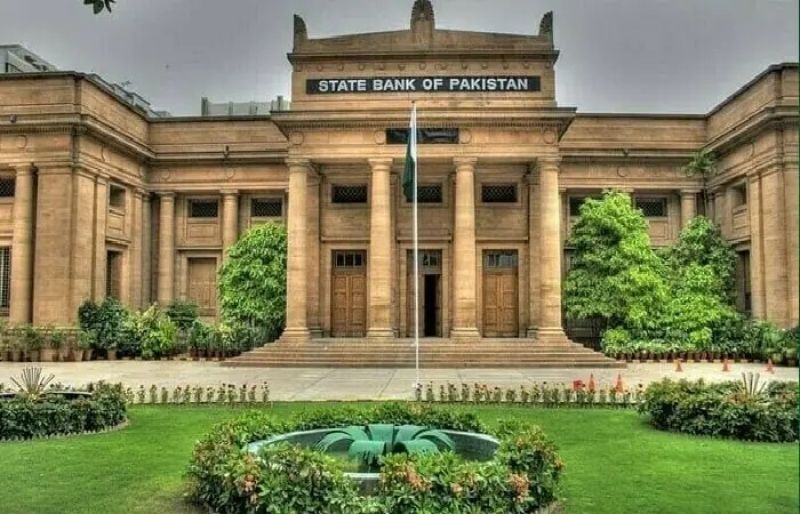Business
‘Flawed’ HMRC system stops hundreds of NI families’ child benefit

 PA Media
PA MediaHundreds of families have had their child benefit payments stopped because they returned to Northern Ireland via Dublin airport.
It follows the introduction of a new government anti-fraud system designed to track those who leave the country but do not come back after eight weeks, raising a red flag at HMRC for possible emigration.
Sinn Féin MP Dáire Hughes, who is representing 14 of the families affected, called the system “flawed”.
As first reported in The Detail, HMRC have apologised for the mistake and said they were “working at pace” to reinstate claims so families are “not left out of pocket”.
 PA Media
PA MediaThe government crackdown on alleged benefit fraud compares HMRC records with Home Office international travel data.
That means families returning to Northern Ireland through Dublin Airport were mistakenly flagged as having gone abroad and were therefore fraudulently claiming benefits.
In one instance a person flew out from Belfast and back through Dublin, while in another a family had travelled to England and back again via Dublin because it was cheaper.
UK and Irish citizens can travel freely into each other’s countries under the Common Travel Area arrangement (CTA).
There are no routine passport checks when travelling through the border between Northern Ireland and the Republic of Ireland, meaning the UK government has no data to show that someone may have returned to Northern Ireland.
HMRC said it would be introducing an “upfront check” to identify Northern Ireland customers whose exit from the UK was to the Republic of Ireland and will not suspend their payments without first clarifying their residency.
‘Simply appalling’
Hughes, who is the MP for Newry and Armagh, told BBC Radio Ulster’s Good Morning Ulster programme that the policy was being “created in a context of being completely oblivious to the realities of life on this island”.
He said that people from Northern Ireland use Dublin Airport for a variety of reasons and it is “just as handy” to them as either airport in Belfast.
“It is quite patently a ridiculous set up, where months and months, in some cases years after returning to the north, a letter arrives at peoples doors informing them that their child benefits have been suspended and in order to get them reinstated there are extensive hoops to jump through,” he added.
“It’s simply appalling.”
He said he has received a “number of confirmations that payments have been reinstated” to some of the families he represents.
Hughes welcomed the news and added that HMRC had to ensure it did not happen again.
‘Protect taxpayers’ money’ – HMRC
HMRC said it had involved a “small number of customers in Northern Ireland”.
As of 17 October 2025, HMRC said they had had sent enquiry letters to 346 customers from Northern Ireland. This is out of 219,255 customers claiming child benefit in Northern Ireland.
HMRC also said they have reinstated payments and closed enquires to 134 people after carrying out employment checks.
There are 46 cases which are currently undergoing these checks and HMRC confirmed they will reinstate payments once they are complete.
Child benefit is paid to more 6.9 million families, supporting 11.9 million children. It is one of the most widely accessed forms of benefit in the UK.
HMRC said a successful pilot scheme focusing on those who left the UK but carried on claiming, had already prevented £17m in wrongful payments by removing them from the system.
“It’s crucial that we undertake this work to protect taxpayers’ money,” HMRC added.
Business
Centre proposes ‘country of origin’ filter on e-commerce sites – The Times of India

NEW DELHI: Consumer affairs department, in a draft notification, has proposed that every e-commerce company selling imported products must provide a “searchable and sortable filter” for “country of origin” with their product listings. This proposed change in the Legal Metrology Rules is aimed at helping consumers make quick choices as per their preference.TOI on July 26 had first reported this plan of govt. The department had suggested e-commerce companies explore this provision on their websites and mobile apps for products.At present, companies display the country of origin of items under the product description option and to check this, buyers need to go through the entire information of each product, which is time taking. Officials said the facility can be created easily considering that many of the e-commerce platforms have filters on their sites and apps such as price range, brand, type of product and different sizes. Hence adding another filter on country of origin is feasible.Meanwhile, the consumer affairs department has notified amended Legal Metrology Rules, stating that 18 different weights and measures will be verified by government approved test centres. These include water meter, sphygmomanometer, clinical thermometer, automatic rail weighbridges, tape measures, non-automatic weighing instruments, load cell, beam scale, counter machine, gas and energy meters, moisture meters and speed meters for vehicles.
Business
Boost to homeowners as four major lenders lower mortgage rates

Homeowners looking to renew their mortgage before the end of the year have received a boost, with four major lenders reducing the interest rates on some deals.
Despite the Bank of England maintaining the base rate at 4 per cent, and not being expected to alter it before December at the earliest, there remains movement in the wider market around both savings and mortgages.
Last week, Zopa bank brought out an inflation-beating 4.75 per cent easy-access savings account, and now some households have another positive to consider, with lowered rates on mortgage deals.
Barclays announced five five-year products with newly lowered rates, ranging from 60 per cent to 95 per cent loan-to-value, with the lowest interest rate among these products coming in at 3.91 per cent.
HSBC did not announce exact cuts, but reduced a raft of residential mortgage products, with Santander then following suit, lowering fixed rates by as much as 0.36 per cent in some three-year fixes. On Monday, NatWest also cut rates, including lowering a two-year fixed deal to 3.77 per cent.
More than 400,000 homeowners will be coming to the end of a fixed-term deal before 31 December, mortgage and finance expert Jo Hodgson told The Independent, with the vast majority likely to need to renew their agreement.
Those who took out two-year deals initially will find interest rates are lower this time round – but those coming to the end of post-Covid purchases on five-year fixes will be preparing for a rise in payments.
This month’s lower-than-expected inflation reading has potentially paved the way for the Bank of England to lower interest rates further in the coming months, but few expect there to be more than one cut in the next three months, meaning that swap rates – which mortgage deals are based on – have already priced in most potential movements.
“There are early positive signs for mortgage rates after the rate of inflation for September held steady, undershooting expectation,” David Hollingworth from L&C Mortgages said.
Get a free fractional share worth up to £100.
Capital at risk.
Terms and conditions apply.
ADVERTISEMENT
Get a free fractional share worth up to £100.
Capital at risk.
Terms and conditions apply.
ADVERTISEMENT
“Hopes that inflation may have peaked at a lower level than expected have opened the door to a reduction in the Bank of England base rate before the end of the year. As market forecasting has improved, swap rates have fallen further, which should give lenders the chance to improve their fixed rates.
“We know that once there are moves from some of the big players, it will inevitably lead to others following suit. If the more positive outlook in the markets holds firm, we could see another series of repricing moves that will cut fixed-rate pricing.
“However, with the Budget to come, it’s hard to predict where sentiment could head from here. That’s already brought some borrower anxiety into play, and so there’s still a strong case for taking a rate now and keeping a close eye on market movement from here. That will give security, but still allow a jump to a lower rate before completion if we see further improvements.”
Business
SBP maintains key policy rate at 11% – SUCH TV

The State Bank of Pakistan’s Monetary Policy Committee (MPC) on Monday kept the policy rate unchanged at 11%, extending a pause in monetary easing for a fourth consecutive meeting.
The central bank had earlier reduced the policy rate by 1 percentage point to 11% on May 5, 2025.
Outlook improves but risks linger
The MPC noted that headline inflation rose to 5.6% in September from 3.0% in August, while core inflation remained at 7.3%. The Committee assessed that flood damage to the broader economy has been smaller than previously feared, with crop losses likely contained, minimal supply disruptions, and high-frequency indicators showing firmer momentum.
With the earlier reduction still transmitting through the economy, the MPC judged the real policy rate “adequately positive” to guide inflation toward the 5–7% medium-term target, even as risks persist from volatile global commodities, evolving tariff dynamics that could challenge exports, and potential domestic food-supply frictions.
Since the last meeting, several developments have shaped the outlook. The Pakistan Bureau of Statistics (PBS) revised the Fiscal Year 2025 (FY25) gross domestic product (GDP) growth to 3.0% from 2.7%. Initial estimates for major Kharif crops remained close to last year’s production despite floods. Notably, the State Bank of Pakistan (SBP) foreign exchange (FX) reserves continued to increase even after repayment of a $500 million Eurobond.
Pakistan reached a staff-level agreement with the International Monetary Fund (IMF) on reviews of the Extended Fund Facility (EFF) and the Resilience and Sustainability Facility (RSF).
Meanwhile, inflation expectations of consumers and businesses softened in the latest State Bank of Pakistan–Institute of Business Administration (SBP–IBA) sentiment surveys, while global commodity prices showed mixed trends and heightened oil volatility.
Reserves build as growth momentum forms
Recent high-frequency indicators point to sustained growth momentum, the statement noted. Major Kharif estimates turned out better than expected, corroborated by satellite imagery showing healthier vegetation. Improved input conditions and an expected post-flood yield uptick support better prospects for Rabi crops.
In industry, Large-Scale Manufacturing (LSM) expanded 4.4% year-on-year in July–August Fiscal Year 2026 (FY26), versus a marginal contraction a year earlier.
Stronger sales of automobiles, cement, fertilisers and petroleum, oil and lubricants (POL) products, alongside firmer private-sector credit and improved business sentiment, have lifted the industrial outlook, with spillovers expected into services. On current trends, real GDP growth is now assessed to be in the upper half of the previously projected 3.25%–4.25% range.
The current account (CA) recorded a $110 million surplus in September 2025, limiting the first quarter (Q1) of FY26 deficit to $594 million, broadly in line with expectations. Exports continued to grow moderately, while faster-rising imports widened the trade gap; workers’ remittances remained resilient.
Together with net financial inflows, this lifted SBP FX reserves to $14.5 billion as of October 17. Looking ahead, imports are likely to gain traction with activity, though flood-related import needs seem lower than earlier assumed, and the outlook for remittances has improved.
Overall, the current account deficit (CAD) is projected at 0–1% of GDP in FY26, with FX reserves expected to reach $15.5 billion by December 2025 and around $17.8 billion by June 2026, assuming planned official inflows.
In Q1-FY26, tax collection grew 12.5% year-on-year to Rs2.9 trillion, Rs198 billion below target. Higher SBP profit transfers and Petroleum Development Levy (PDL) receipts should bolster non-tax revenue, according to the statement.
Both the overall balance and the primary balance are likely to post surpluses for the quarter. The MPC expects post-flood rehabilitation to be financed within budgeted resources and reiterated the need for continued fiscal discipline to meet balance targets and secure long-term sustainability.
Broad money (M2) growth decelerated to 12.3% as of October 10, driven by a decline in the banking system’s net domestic assets, mainly due to sharply slower bank credit to non-bank financial institutions (NBFIs).
Net budgetary borrowing remained contained, creating space for the private sector: private-sector credit (PSC) growth rose to 17%, broad-based across working capital, fixed investment and consumer loans, with notable demand from textiles, telecommunications, chemicals, and wholesale/retail trade.
On the liability side, currency in circulation rose year-on-year while deposit growth decelerated, lifting the currency-to-deposit ratio (CDR) to 37.6% and keeping reserve money growth elevated.
The rise in headline inflation to 5.6% in September reflected flood-related food price increases, an uptick in energy prices, and sticky core inflation. Unlike past flood episodes, the food-price surge appears milder than feared, with the Sensitive Price Indicator (SPI) showing slower increases in wheat and allied products, sugar, and perishables.
The MPC nevertheless expects inflation to exceed the 5–7% band for a few months in the second half (H2) of FY26 before reverting to the target range in FY27. Key risks cited by the MPC include global commodity volatility, the timing and magnitude of future energy-price adjustments, and uncertainty around prices of wheat and perishable food items.
-

 Tech1 week ago
Tech1 week agoHow to Protect Yourself Against Getting Locked Out of Your Cloud Accounts
-

 Tech1 week ago
Tech1 week agoThe DeltaForce 65 Brings Das Keyboard Into the Modern Keyboard Era—for Better or Worse
-

 Business1 week ago
Business1 week agoGovernment vows to create 400,000 jobs in clean energy sector
-

 Business1 week ago
Business1 week agoDiwali 2025: Gold & silver likely to consolidate next week; Here’s what analysts said – The Times of India
-

 Tech1 week ago
Tech1 week agoGemini in Google Home Keeps Mistaking My Dog for a Cat
-

 Fashion1 week ago
Fashion1 week agoReal UK GDP grows 0.3% QoQ in quarter to Aug 2025: ONS
-

 Business1 week ago
Business1 week agoInflation expected to jump to highest since January last year
-

 Fashion6 days ago
Fashion6 days agoChinese woman charged over gold theft at Paris Natural History Museum






